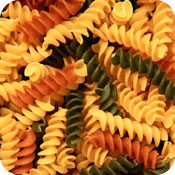 Folate (also called folic acid, folacin and Vitamin B9) is a vital nutrient for the development of new cells. A few months before conception, a mother-to-be should start consuming a diet rich in folate and start taking a multivitamin-mineral supplement that contains 400 micrograms of folic acid. Adequate folate intake can reduce the risk of spina bifida and other birth defects affecting the spine and brain.
Folate (also called folic acid, folacin and Vitamin B9) is a vital nutrient for the development of new cells. A few months before conception, a mother-to-be should start consuming a diet rich in folate and start taking a multivitamin-mineral supplement that contains 400 micrograms of folic acid. Adequate folate intake can reduce the risk of spina bifida and other birth defects affecting the spine and brain.
Folate continues to be important throughout your pregnancy. Besides decreasing the risk of neural-tube defects, it is also involved in the formation of red and white blood cells and prevents anemia. The recommended daily intake increases to 600 micrograms throughout pregnancy. (Breastfeeding moms need 500 micrograms, while bottlefeeding moms need 400 micrograms.) To assure adequate folate intake, most healthcare providers prescribe taking a prenatal supplement for all women during pregnancy. Your prenatal supplement contains 600 to 800 micrograms of folic acid.
Good sources of folate include leafy dark-green vegetables (spinach, kale, collard greens, and romaine lettuce), legumes, dried beans, citrus fruits and juices, nuts, whole grains, peanuts, asparagus, broccoli, cantaloupe, tomatoes, and strawberries. Since 1988, grain products, such as flour, breakfast cereals, and pasta have been fortified with folic acid to help all women meet their folate needs. Eating a well-balanced diet can help meet your folate needs.
Here are some ideas to get you started.
- Consume a variety of grain products daily?breads, cereals, rice, noodles, pasta, muffins, bagels, cornbread, and rolls. (Try to be sure they're whole-grain. The fiber will help ward off that common pregnancy discomfort--constipation.)
- Plan your meals to always include a touch of something green?broccoli, salad, asparagus, spinach, avocados, turnip greens, etc.
- Overcooking destroys folate, so add vegetables to raw salads or serve them raw with a dip.
- However, briefly steaming vegetables helps them retain nutrients.
- When cooking vegetables in water, save the water to use in soups.
- Add variety to your diet with beans. Try bean soup, bean burritos, and bean salad. Add beans to your chili or garbanzo beans to your salad. Serve lima beans or baked beans as a side dish. Enjoy bean dip for a snack.
- Have a glass of orange juice for breakfast.
- Blend orange juice with yogurt, strawberries, and a banana for a wonderful smoothie.
- Mix together grapefruit or orange juice and club soda for a delicious spritzer.
Here's a handy chart to find out how much folate is in your favorite foods:
| Food sources |
Micrograms (%RDA)
|
| Asparagus, 1 cup |
264 (44%) |
| Black-eyed peas, 1/2 cup cooked |
105 (18%) |
| Spinach, 1/2 cup cooked |
100 (17%) |
| Great Northern beans, 1/2 cup cooked |
90 (15%) |
| Vegetarian baked beans, canned, 1 cup |
60 (10%) |
| Spinach, raw, 1 cup |
60 (10%) |
| Green peas, 1/2 cup |
50 (8%) |
| Avocado, 1/2 cup sliced |
45 (7.5%) |
| Peanuts, dry roasted, 1 ounce |
40 (7%) |
| Romaine lettuce, shredded, 1/2 cup |
40 (7%) |
| Wheat germ, 2 Tablespoons |
40 (7%) |
| Tomato Juice, 6 ounces |
35 (6%) |
| Orange juice, 3/4 cup |
35 (6%) |
| Grapefruit, 1 large |
30 (5%) |
| Turnip greens, 1/2 cup |
30 (5%) |
| Orange, 1 small |
30 (5%) |
| Egg, whole, raw, fresh, 1 large |
25 (4%) |
| Cantaloupe, raw, 1/4 medium |
25 (4%) |
| Papaya, raw, 1/2 cup cubes |
25 (4%) |
| Banana, raw, 1 medium |
20 (3%) |
Continued ›
|
 Folate (also called folic acid, folacin and Vitamin B9) is a vital nutrient for the development of new cells. A few months before conception, a mother-to-be should start consuming a diet rich in folate and start taking a multivitamin-mineral supplement that contains 400 micrograms of folic acid. Adequate folate intake can reduce the risk of spina bifida and other birth defects affecting the spine and brain.
Folate (also called folic acid, folacin and Vitamin B9) is a vital nutrient for the development of new cells. A few months before conception, a mother-to-be should start consuming a diet rich in folate and start taking a multivitamin-mineral supplement that contains 400 micrograms of folic acid. Adequate folate intake can reduce the risk of spina bifida and other birth defects affecting the spine and brain. 




Member Comments